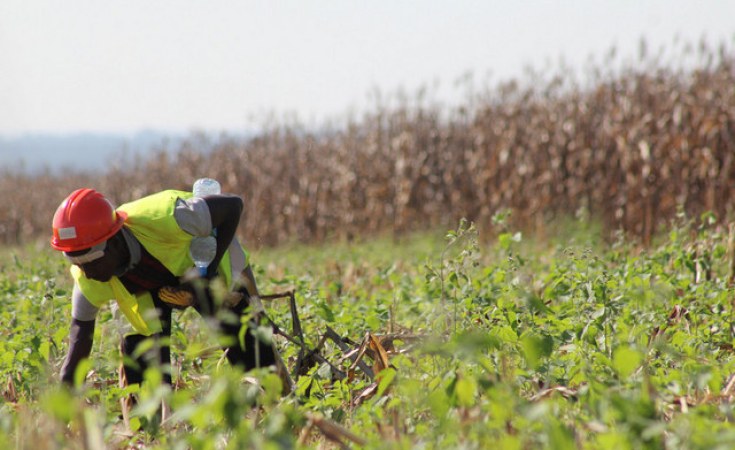Wakiso, Uganda — On a hot December day in the Wakiso district in Uganda's Central Region, 56-year-old Chinese agriculture expert Chen Taihua, gazing at the fish ponds at the Chinese-built agriculture center, was deep in thought of how lessons learnt back home can be implemented in rural Uganda to pull millions of people out of poverty.
As a breeze from the nearby Lake Victoria gave a cooling effect to the midday heat, Chen could not help but talk about the abundance of water and arable land that Uganda has.
While feeding the fish, Chen told Xinhua in a recent interview that in this abundance lays Uganda's wealth, which if properly harnessed, can improve the livelihood of Ugandans.
Chen is treading a path that other Chinese experts have taken in supporting Uganda, where over 70 percent of the population derives its livelihood from agriculture, according to figures from the country's Ministry of Agriculture, Animal Industry and Fisheries (MAAIF).
Chen, who is part of a team of Chinese agriculture experts that arrived in the country about two months ago, is part of the building bricks.
China, through a tripartite agreement with Uganda and the Food and Agriculture Organization (FAO) of the United Nations, sent a team of experts to the east African country to share experiences with small-holder farmers on how best to improve production using appropriate technologies. The cooperation is under the framework of the FAO-China South-South Program which is now in the third phase in Uganda.
The first and second phases, according to MAAIF, facilitated technology transfer and enabled improvements in the production and productivity of the crop, livestock, and fisheries sub-sectors.
During the phases, the Chinese hybrid rice variety and Chinese foxtail millet variety were introduced to farmers. The rice yields about 10 tonnes per hectare compared to improved and local varieties which yield 3.5 and 2.5 tonnes per hectare respectively, according to MAAIF. The foxtail millet variety, meanwhile, yields about 5 tonnes per hectare as compared to local and improved finger millet varieties grown in Uganda which yield 1 and 2.5 tonnes per hectare, respectively.
During the implementation of the first two phases, a 220-million-U.S.-dollar China-Uganda Agricultural Cooperation Industrial Park was established in the central part of the country.
Zhang Xiaoqiang, head of the Chinese agriculture team for the third phase said the team is aiming to move local farmers to look at agriculture in a commercial way instead of subsistence. Zhang said the Chinese technicians will transfer knowledge and skills to the farmers through agriculture extension workers.
"In the third phase, we want to promote investment in the agriculture industry, high-quality products, and bring them to the Chinese market. We also encourage more Chinese enterprises to invest in Uganda, and to bring all their value chain," Zhang said.
Peter Muyimbo, the coordinator of the third phase on the Ugandan side, said the phase has been designed to commercialize agricultural production with a target of increasing exports to the Chinese market. He said during the phase, Chinese experts and technicians will interact with local farmers, sharing their experiences and best practices.
"We are going to upscale production in Chinese hybrid rice, foxtail millet, production of livestock where we are dealing with goat production, especially the big ear goat. We shall also have embryo transfer especially in dairy production, we shall also have feeds," said Muyimbo.
He said during the implementation of the phase, Uganda will draw lessons from China on how it has ensured food sovereignty and also ended extreme poverty. "We would like to copy and learn this from the Chinese people."


